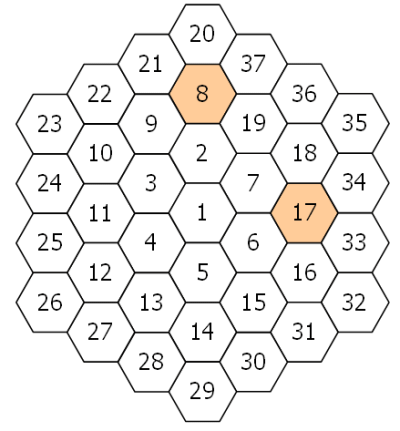1.6 KiB
| id | title | challengeType | forumTopicId | dashedName |
|---|---|---|---|---|
| 5900f3ec1000cf542c50feff | Problem 128: Hexagonal tile differences | 5 | 301755 | problem-128-hexagonal-tile-differences |
--description--
A hexagonal tile with number 1 is surrounded by a ring of six hexagonal tiles, starting at "12 o'clock" and numbering the tiles 2 to 7 in an anti-clockwise direction.
New rings are added in the same fashion, with the next rings being numbered 8 to 19, 20 to 37, 38 to 61, and so on. The diagram below shows the first three rings.

By finding the difference between tile n and each of its six neighbours we shall define PD(n) to be the number of those differences which are prime.
For example, working clockwise around tile 8 the differences are 12, 29, 11, 6, 1, and 13. So PD(8) = 3.
In the same way, the differences around tile 17 are 1, 17, 16, 1, 11, and 10, hence PD(17) = 2.
It can be shown that the maximum value of PD(n) is 3.
If all of the tiles for which PD(n) = 3 are listed in ascending order to form a sequence, the 10th tile would be 271.
Find the 2000th tile in this sequence.
--hints--
hexagonalTile() should return 14516824220.
assert.strictEqual(hexagonalTile(), 14516824220);
--seed--
--seed-contents--
function hexagonalTile() {
return true;
}
hexagonalTile();
--solutions--
// solution required